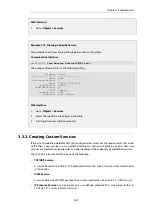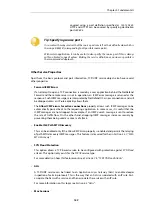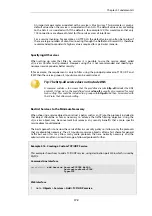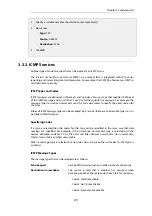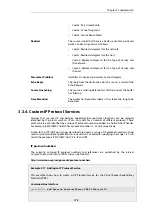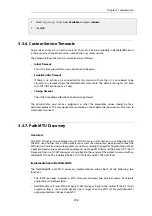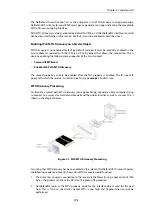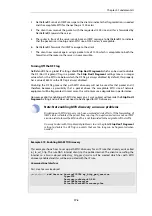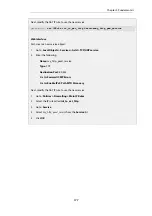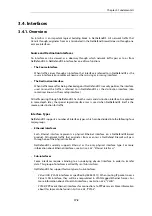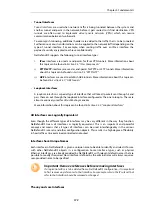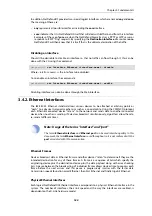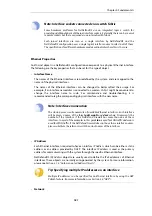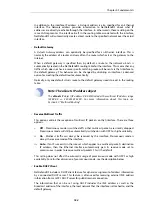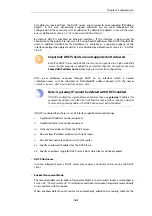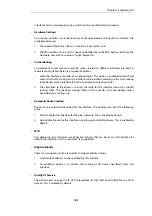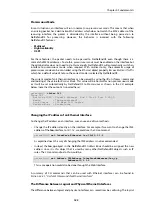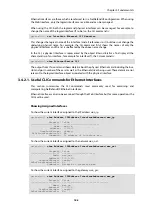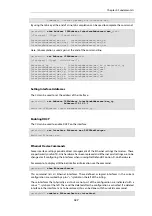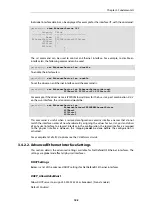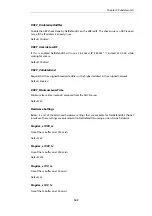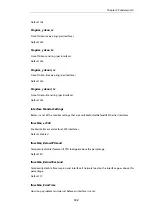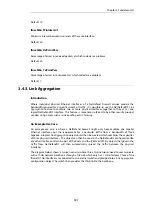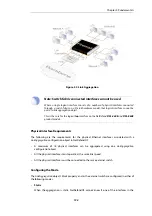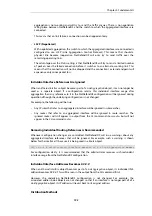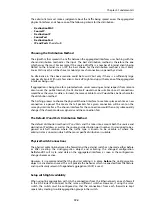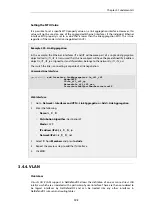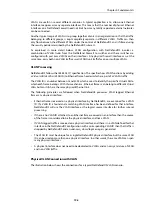
Note: Interface sockets connected via a switch fabric
Some hardware platforms for NetDefendOS use an integrated layer 2 switch for
providing additional physical Ethernet interface sockets. Externally there can be several
separate sockets but these are joined via an internal switch fabric.
Such joined interfaces are seen as a single interface by NetDefendOS and the
NetDefendOS configuration uses a single logical interface name to refer to all of them.
The specifications for different hardware models will indicate where this is the case.
Ethernet Properties
An
Ethernet
object in a NetDefendOS configuration corresponds to a physical Ethernet interface.
The following are the key properties that can be set for this type of object:
•
Interface Name
The names of the Ethernet interfaces are predefined by the system, and are mapped to the
names of the physical interfaces.
The names of the Ethernet interfaces can be changed to better reflect their usage. For
example, if an interface named
dmz
is connected to a wireless LAN, it might be convenient to
change the interface name to
radio
. For maintenance and troubleshooting, it is
recommended to tag the corresponding physical interface with the new name.
Note: Interface enumeration
The startup process will enumerate all available Ethernet interfaces. Each interface
will be given a name of the form
lanN
,
wanN
and
dmz
, where N represents the
number of the interface if the NetDefend Firewall has more than one of these
interfaces. In most of the examples in this guide
lan
is used for LAN traffic and wan is
used for WAN traffic. If the NetDefend Firewall does not have these interface names,
please substitute the references with the actual names of the interfaces.
•
IP Address
Each Ethernet interface is required to have an
Interface IP Address
, which can be either a static
address or an address provided by DHCP. The interface IP address is used as the primary
address for communicating with the system through the specific Ethernet interface.
NetDefendOS
IP4 Address
objects are usually used to define the IPv4 addresses of Ethernet
interfaces. Those objects are normally auto-generated by the system. For more information,
please see
Section 3.1.5, “Auto-Generated Address Objects”
.
Tip: Specifying multiple IP addresses on an interface
Multiple IP addresses can be specified for an Ethernet interface by using the ARP
Publish feature. (For more information, see Section 3.5, “ARP”).
•
Network
Chapter 3: Fundamentals
181
Summary of Contents for NetDefendOS
Page 30: ...Figure 1 3 Packet Flow Schematic Part III Chapter 1 NetDefendOS Overview 30 ...
Page 32: ...Chapter 1 NetDefendOS Overview 32 ...
Page 144: ...Chapter 2 Management and Maintenance 144 ...
Page 284: ...Chapter 3 Fundamentals 284 ...
Page 392: ...Chapter 4 Routing 392 ...
Page 419: ... Host 2001 DB8 1 MAC 00 90 12 13 14 15 5 Click OK Chapter 5 DHCP Services 419 ...
Page 420: ...Chapter 5 DHCP Services 420 ...
Page 573: ...Chapter 6 Security Mechanisms 573 ...
Page 607: ...Chapter 7 Address Translation 607 ...
Page 666: ...Chapter 8 User Authentication 666 ...
Page 775: ...Chapter 9 VPN 775 ...
Page 819: ...Chapter 10 Traffic Management 819 ...
Page 842: ...Chapter 11 High Availability 842 ...
Page 866: ...Default Enabled Chapter 13 Advanced Settings 866 ...
Page 879: ...Chapter 13 Advanced Settings 879 ...

